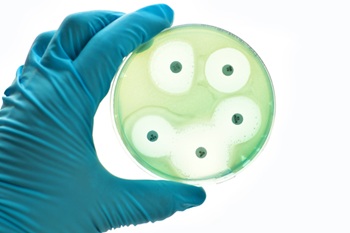GEPOTIDACIN (BLUJEPA): A NEW ANTIBIOTIC APPROVED FOR FEMALE UTIs
Gepotidacin has also shown efficacy against gonorrhea
Straight Healthcare
May 2025
May 2025

Gepotidacin (Blujepa) is a new antibiotic approved for uncomplicated female UTIs in adult and pediatric patients 12 years of age and older weighing at least 88 lbs (40 kg). It is a first-in-class triazaacenaphthylene antibiotic that works by inhibiting bacterial DNA gyrase and topoisomerase IV, essential enzymes for bacterial DNA replication. Its efficacy was evaluated in two randomized, noninferiority trials comparing gepotidacin (1500 mg BID for 5 days) to nitrofurantoin (100 mg BID for 5 days) in females with uncomplicated UTIs. In Trial 1 (N=634), the composite response rate (clinical cure and microbiological eradication at Day 10 to 13) was 51.8% for gepotidacin and 47.0% for nitrofurantoin, with a treatment difference of 5.3% (95% CI: -2.4, 13.0). In Trial 2 (N=567), the composite response rates were 58.9% and 44.0%, respectively, with a treatment difference of 14.4% (95% CI: 6.4, 22.4). Common side effects include diarrhea (16%), nausea (9%), and abdominal pain (4%). Gepotidacin is a sensitive CYP3A4 substrate and should not be taken with strong CYP3A4 inhibitors or inducers. It also inhibits acetylcholinesterase, which may cause it to potentiate the effects of other acetylcholinesterase inhibitors (e.g., donepezil) and reduce the efficacy of anticholinergics (e.g., benztropine, oxybutynin). It comes in a 750 mg tablet, and the recommended dosing is 1500 mg (two 750 mg tablets) twice daily for 5 days, taken after a meal.
Another possible use for gepotidacin, treatment of Neisseria gonorrhea, was evaluated in a randomized trial. The EAGLE-1 study (N=628) compared gepotidacin (two 3000 mg doses 10-12 hours apart) to intramuscular ceftriaxone 500 mg plus oral azithromycin 1 g for uncomplicated urogenital gonorrhea in patients 12 years of age and older weighing at least 88 lbs (40 kg). Microbiological cure rates at Days 4 - 8 were 92.6% for gepotidacin and 91.2% for ceftriaxone/azithromycin, demonstrating noninferiority of gepotidacin. Gastrointestinal side effects were more common in the gepotidacin group.
Like all new drugs, gepotidacin will be too expensive to be considered first-line for UTIs. However, its efficacy in gonorrhea is intriguing, given the increasing resistance of this bacterium to available therapies. A study of its effects in drug-resistant gonorrhea would be informative.
Another possible use for gepotidacin, treatment of Neisseria gonorrhea, was evaluated in a randomized trial. The EAGLE-1 study (N=628) compared gepotidacin (two 3000 mg doses 10-12 hours apart) to intramuscular ceftriaxone 500 mg plus oral azithromycin 1 g for uncomplicated urogenital gonorrhea in patients 12 years of age and older weighing at least 88 lbs (40 kg). Microbiological cure rates at Days 4 - 8 were 92.6% for gepotidacin and 91.2% for ceftriaxone/azithromycin, demonstrating noninferiority of gepotidacin. Gastrointestinal side effects were more common in the gepotidacin group.
Like all new drugs, gepotidacin will be too expensive to be considered first-line for UTIs. However, its efficacy in gonorrhea is intriguing, given the increasing resistance of this bacterium to available therapies. A study of its effects in drug-resistant gonorrhea would be informative.
- Gepotidacin (Blujepa) review
- Gepotidacin vs Nitrofurantoin for Female UTI, Lancet (2024)
- Gepotidacin vs Ceftriaxone + Azithromycin for Gonorrhea, Lancet (2024)
